#Natural Azurite pseudomorph
Explore tagged Tumblr posts
Text

Geology Rocks: Azurite Pseudomorph
https://toyastales.blogspot.com/2024/09/geology-rocks-azurite-pseudomorph.html
#azurite#Natural Azurite pseudomorph#geology rocks#geology#geology stuff#crystals#stones#rocks#minerals#third eye chakra#capricorn#fall aesthetic#fall vibes#fall#autumn#toya's tales#style#toyastales#toyas tales#art#september#blue#gemstones#blue stone#blue crystals#witches#witchy#esoteric#spirital meaning#crystal meanings
284 notes
·
View notes
Text

Natural Azurite pseudomorph, Kamenushinskoe Cu deposit, Salairsky mine, Guryevsky area, Kemerovo Oblast, Russia
Photo: @South_Siberian_Minerals
454 notes
·
View notes
Text
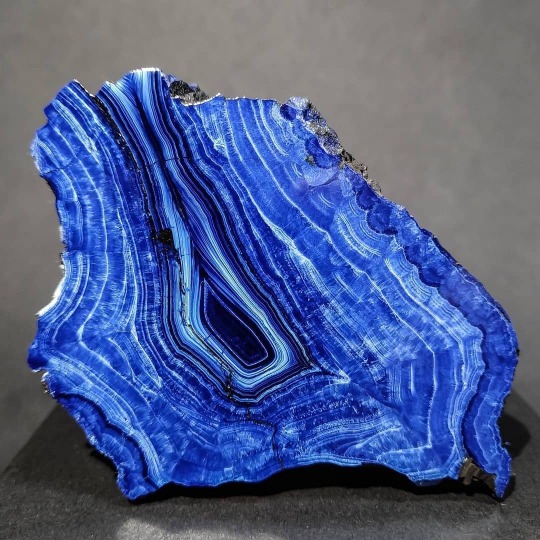
Natural Azurite pseudomorph, @South_Siberian_Minerals
2 notes
·
View notes
Photo
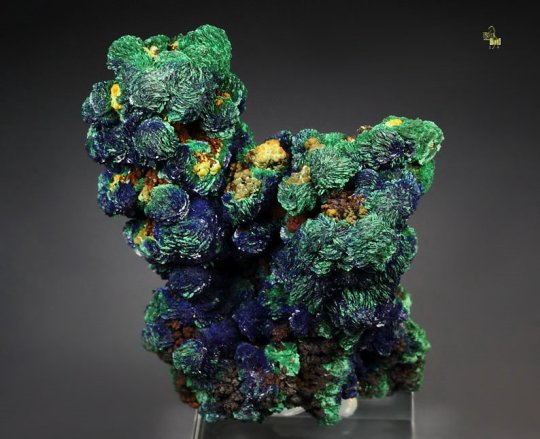
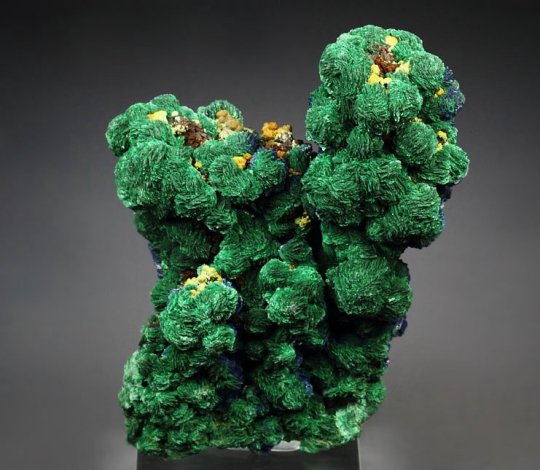
Malachite psm Azurite - Seabra, Bahia, Brazil
679 notes
·
View notes
Photo
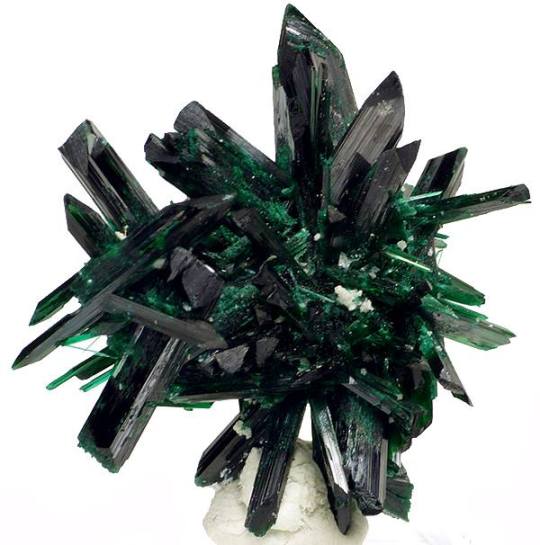
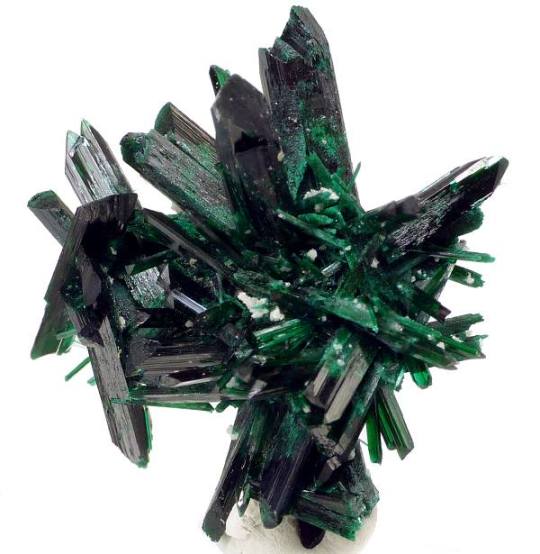
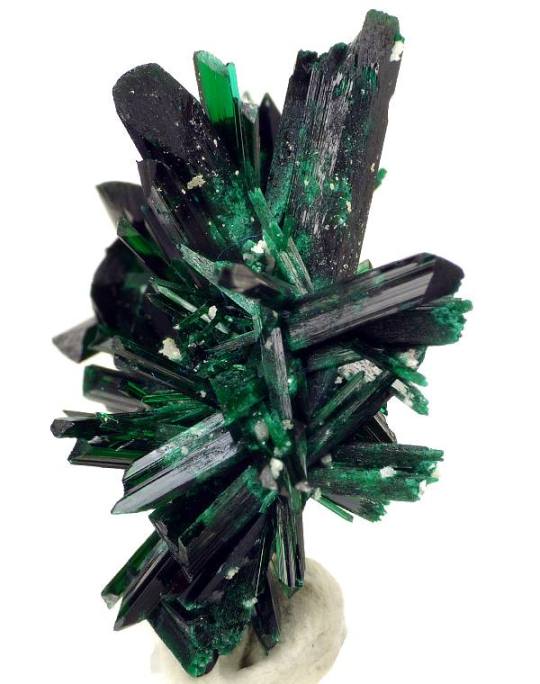
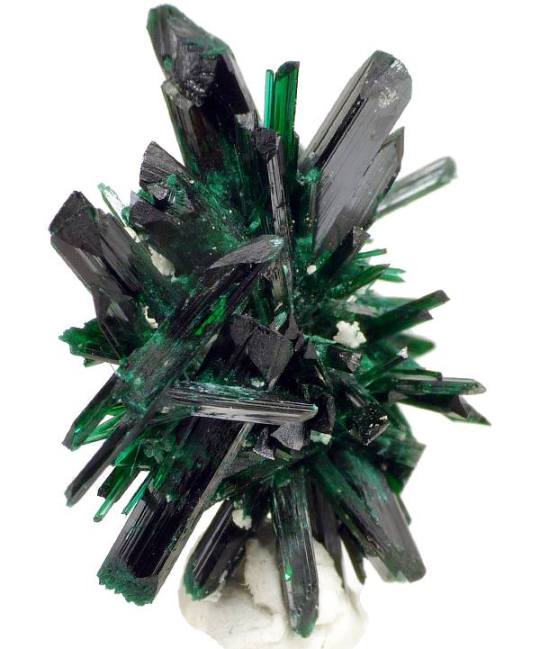
Brochantite star
Many of us have grown similar crystals by hanging a piece of string into a copper sulphate solution and letting it evaporate. In nature, an arid climate or an oxidising (see http://bit.ly/1I4XWKt for an explanation) primary copper sulphide deposit is required for this mineral to form. Colour ranges from bright emerald green to blue green, though its softness (3.5 on Mohs scale) prevents faceting or jewellery use.
Since it forms in the same environments as malachite and azurite (copper carbonates), they are frequently found together, and sometime brochantite replaces the other minerals, taking on their crystal shape in a process called pseudomorphism (from pretend shape in Greek). The more usual distinguishing shape is as sprays of acicular (needle shaped) crystals, often radiating from a common centre. It go was named in 1824 after a French mineralogist, Brochant de Villiers and is an important ore mineral.
Main localities include the copper mines of the Atacama in Chile, the Zaire copper belt in the Democratic Republic of Congo, the Tsumeb mine (see http://bit.ly/1c2CjkD) and Arizona in the USA. A few stunning specimens (including the 2.5 x 2.5 x 1.8 cm one in the photo) have recently emerged from the Milpillas mine in Sonora, Mexico.
Loz
Image credit: Spirifer Minerals
http://www.mindat.org/min-779.html http://www.galleries.com/Brochantite http://bit.ly/1N0Tqox http://bit.ly/20pv7TD
#Geology#brochantite#mineral#copper#crystal#science#sulfur#hypogene#supergene#research#atacama#mine#the earth story
226 notes
·
View notes
Text
Azurite stone and its properties:
Azurite (from French "azur") - azure, (from Persian "lazard") - blue. According to ancient descriptions, azurite was often confused with dark blue lapis lazuli, which was highly prized in the East. The words azurite and lapis lazuli come from the same Arabic root "azul" - blue, and the Persian "lazard" - azure, where the initial "l" is just an article. This stone is also called copper azure and mountain blue. In Europe, azurite was called shessilite, because it was mined in the French town of Chessy.
Origin and chemical composition
Azurite is a copper ore that is less common in nature than lapis lazuli, but is less valuable in industry. The mineral is formed in deposits with a high content of copper sulphites as a result of their oxidation. Basically, nuggets have a cryptocrystalline form, natural stone crystals are very rare. Azurite often forms pseudomorphs with malachite. This breed is called azur-malachite. In terms of chemical composition, azurite is an aqueous copper carbonate.
Processing and use
Jewelry with azurite inserts is practically not found on the market, which is due to the increased fragility of the stone (cracks even with a slight mechanical effect) and unstable color. Azurite is primarily of interest to mineral collectors. Small azurite cabochons, due to their affordable price and characteristic color, often become the first exhibits in the collections of aspiring collectors. Less often they are used as ornamental material. In the jewelry industry, azur-malachite has found application, devoid of the shortcomings of pure azurite, but no less beautiful.
Azurite deposits
Azurites are mainly mined in Australia (Queensland), Chile, Mexico, USA (Arizona and New Mexico), Germany, France, Kazakhstan and Africa (Zaire, Namibia, Zambia). In terms of the quality of collectible azurite, the first place belongs to the famous Teumeb deposit in Namibia, where individual crystals reach 25 cm in size with impeccable quality. Azurites from deposits in Morocco - Mibladen and Tuissit are widely known. Interesting samples of azurite are mined at the copper deposits of the South Urals.
Imitation and synthetics
Today, as in the old days, azurite is often confused with its counterpart lapis lazuli, considering azurite to be only one of the varieties of the latter. Azurite is a completely independent mineral, which, unlike lapis lazuli, has a much brighter blue tone. Malachite stains are not observed in lapis lazuli, while azurite often fuses with malachite. Azurite is easy to distinguish from other stones, as it is the only mineral with a deep blue color that boils in hydrochloric acid.
The magical properties of azurite
In ancient Egypt, priests used azurite to communicate with the gods. In Ireland, the druids, with the help of native azurite sticks, helped the youth decide on the choice of life. Azurite is useful for those who are engaged in energy practices, fortune-telling and prediction. Occultists and mediums use azurite balls and crystals to meditate and enter an altered state of consciousness.
In the East, it is the "third eye" stone. According to the famous specialist in minerals Katrin Raphael, azurite products will help get rid of negative emotions, overcome fears, and relieve emotional arousal. If you are having a difficult period in your life and you cannot make the right decision, put on jewelry with azurite, and this stone will show you the best way to solve the problem.
As a talisman, azurite is suitable for people who, due to their duty, must be honest and objective - lawyers, judges, journalists, but only on the condition that the owner does not dissemble, otherwise the stone may punish him.
Healing properties
According to lithotherapists, azurite is a remedy for all diseases, it is enough just to apply a stone to a sore spot. It is useful for hormonal problems, hypertension. Like any blue stone, azurite relieves eye strain and is used as a prophylactic agent for decreased vision. Azur-malachite has even greater healing power. It is placed on the "third eye" area (that is, in the middle of the forehead) to harmonize the emotional state of a person.
Horoscope
Azurite is most suitable for Taurus, Libra and Sagittarius.
History
The term "azurite" was introduced into use in 1824 by the French scientist-mineralogist Francois Bedan. Despite the fact that the stone has been known since ancient times, for a long time it was confused with a similar mineral - lapis lazuli. So, for example, Aristotle in his writings described the properties of these two gems, not noting any differences between them.
In the Middle Ages, lapis lazuli and its "double" azurite were actively used to create natural colors of deep blue color. Moreover, the latter was used even more often, because its processing required much less time and effort. The disadvantages of azurite paint have already been revealed in our time. It turned out that with prolonged exposure to air and under the influence of moisture, the mineral gradually turns into malachite. It is this physical property of the stone that explains the predominance of green in the paintings of ancient artists.
The largest azurite in history is called the "Singing Stone". A nugget weighing more than 4.5 tons was found in the United States and is today exhibited at the American Museum of Natural History in New York.
Properties and virtues of Tourmaline
Star Sapphire stone: a stone pleasing to Saint Hildegard
0 notes
Text
Wednesday 22nd July 2020
Champions of England - What a Day!
I couldn’t let it go by without a mention could I! Trophy Time tonight.
Woooaaah that’s a hefty trophy according to these facts LINK
and for a #nature link, the base has Malachite which represents the turf played upon.
Malachite is a copper carbonate mineral and people who believe in the charms of such say
Healing with Malachite
♥ Calming ♥ Loyalty ♥ Leadership ♥ Protection ♥ Wisdom ♥ Comfort ♥ Balance ♥ Peace ♥ Self-understanding ♥ Positive transformation ♥ Healing Malachite is an important protection stone. Malachite absorbs negative energies and pollutants, picking them up from the atmosphere and from the body. Guards against radiation and clears electromagnetic pollution. Malachite clears and activates the chakras and attunes to spiritual guidance. It opens the heart to unconditional love. Encourages risk-taking and change, breaks unwanted ties and outworn patterns, and teaches how to take responsibility for one’s actions, thoughts and feelings. Malachite releases inhibitions and develops empathy with others. It alleviates mental disturbances and combats dyslexia. Enables you to absorb and process information. Releases negative experiences and old traumas. Stimulates dreams.
Malachite balances mood swings and heals cramps. It facilitates labour, alleviates menstrual disorders such as PMT and period pains, as well as menopause. Boosts the immune and nervous systems. Malachite lowers blood pressure, treats asthma, arthritis, epilepsy, fractures, swollen joints, growths, travel sickness, vertigo, tumours, the optic nerve, pancreas, spleen and the parathyroid. It pinpoints tumours, realigning and repairing the DNA and cellular structure that causes cancers. It can be used on all forms of cancer and enhances and stimulates the immune system. Malachite stimulates the liver to release toxins.
Picking and choosing from all that makes it sound an eminently suitable choice for such a prestigious and sought after (30 years!) trophy - they should’ve used it for the whole thing! For the less romantically inclined:
Malachite is a copper carbonate hydroxide mineral, with the formula Cu2CO3 (OH)2. This opaque, green-banded mineral crystallizes in the monoclinic crystal system, and most often forms botryoidal, fibrous, or stalagmitic masses, in fractures and deep, underground spaces, where the water table and hydrothermal fluids provide the means for chemical precipitation. Individual crystals are rare, but occur as slender to acicular prisms. Pseudomorphs after more tabular or blocky azurite crystals also occur.
Wikipedia
Last night I watched a TV programme that I really enjoyed. On BBC2 if you can get UK TV
The Torridon, Scotland Giles Coren and Monica Galetti join the staff working in some of the most unusual hotels around the world, learning the tricks of the trade along the way. This time, Giles and Monica help out at The Torridon in the Scottish Highlands, Britain's most northerly five-star hotel. Its need to balance a luxury stay with being self-sufficient has Monica collecting seaweed for the kitchen and helping to herd Highland cattle, while Giles learns to change toilet seats and joins the staff in their afternoon off - for a swim in the beautiful but freezing-cold loch
A small part of the programme showed sky gazing in the dark skies. We’re lucky we have dark skies here, although I’ve been looking out for the pass of the ISS and my sky app is confusing, I think I got one that shows myriad galaxies instead of just pointing me at the obvious. Anyway, years ago we had a lovely Indian Ocean holiday and did some star gazing on the golf course with a resident host. That was amazing, especially seeing the Milky Way so clearly and from the other side of the Equator. Loved that. I’ll be looking out tonight.
I also watched The Secret Mediterranean with Trevor McDonald. That’s on ITV and it’s another good watch. Apparently Cairo means ‘victorious’ in Arabic. I never knew that before. If you can get the ITV Hub you can catch up on there.
Right, well, sorry about the lack of photos today, I’ve been busy. Am, right now starting to watch the match with a side view of 8 rabbits - clearly all one family - busy at the seed tray. So sweet (sorry S) and about to have a special celebratory supper. Normal service may be resumed tomorrow.

GARDEN NEST WATCH:
Daisy Waldron is here and there. The Wisteria nest is repaired and she is in there sometimes. OH has also observed a pair, who he thinks are the Waldrons, taking off over the lane opposite - maybe a second nest for the youth? No doubt my Guru will advise.
Normal service may resume tomorrow, however, I really can’t promise there may be a hangover in action...
Outside links in bold are not affiliated to this Blog
0 notes
Photo
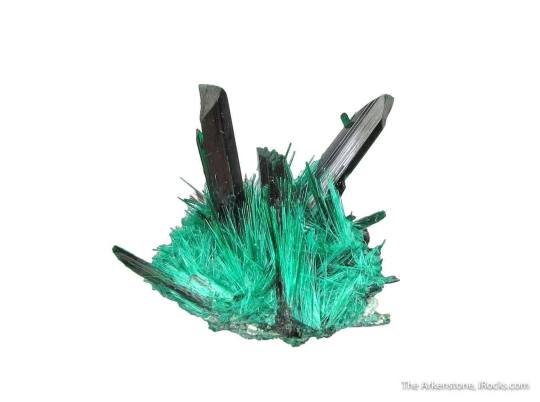
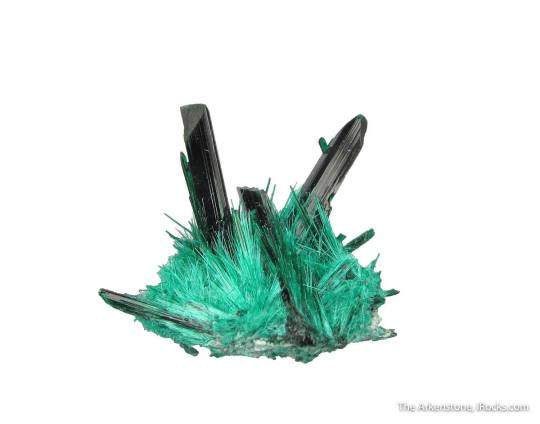
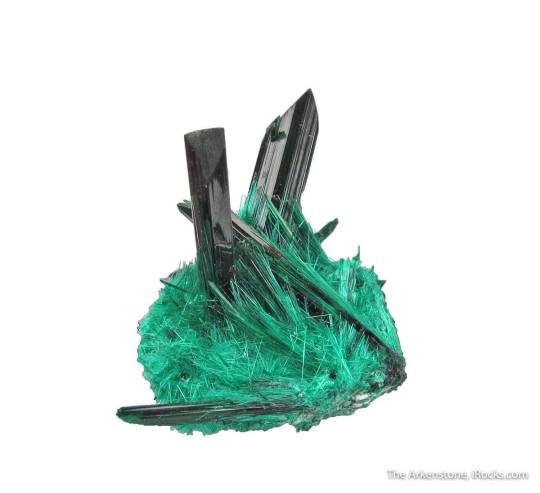
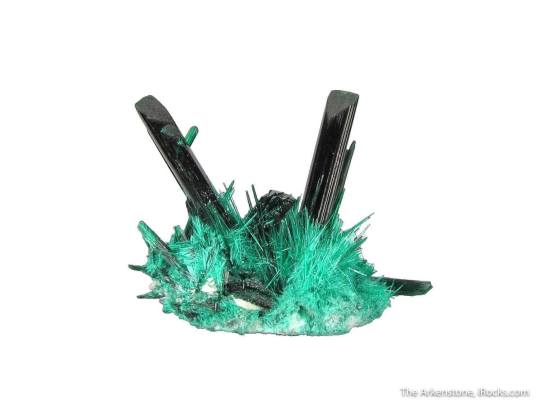
Two generations of Brochantite, one atop the other
Many of us have grown similar crystals by hanging a piece of string into a copper sulphate solution and letting it evaporate. In nature, an arid climate and an oxidising (see http://bit.ly/1I4XWKt for an explanation) copper sulphide deposit are required for this mineral, which forms when groundwater interacts with reduced ore deposits changing the primary minerals to secondary ones. Preservation is also an issue since like Atacamite, another arid mineral (see http://bit.ly/2iEOVFX), it is soluble in water and so is only rarely found.
Colour ranges from bright emerald green to a dark blue green, though its softness (3.5 on Mohs scale) prevents faceting or jewellery use. Since it forms in the same environments as malachite and azurite (copper carbonates), they are frequently found together, and sometime brochantite replaces the other minerals, taking on their crystal shape in a process called pseudomorphism (from pretend shape in Greek). The more usual distinguishing shape is as sprays of acicular (needle shaped) crystals, often radiating from a common centre. It was named in 1824 after a French mineralogist, Brochant de Villiers, and is an important ore mineral in several desert mines.
Main localities include the copper mines of the Atacama desert in Chile, the Zaire copper belt in the Democratic Republic of Congo, the Tsumeb mine (see http://bit.ly/1c2CjkD) and Arizona in the USA. A few stunning specimens (including the one in the photo that resembles an eerie mineral trilobite that once prowled over some long vanished Cambrian sea) have emerged this past decade from the Milpillas mine in Sonora, Mexico, also famous for beautiful azurites. Here, in this 2.4 x 1.8 x 1.8 cm thumbnail several deep green crystals rise above sprays of needle shaped (called acicular) light green material making for a stunning ensemble.
Loz
Image credit: Rob Lavinsky/iRocks.com http://www.mindat.org/min-779.html http://www.galleries.com/Brochantite http://bit.ly/1N0Tqox http://bit.ly/20pv7TD
#Brochantite#Mineral#Crystal#Geology#Copper#Chemistry#Rock#The earth story#Sonora#Mexico#Mineralogy#Acicular
110 notes
·
View notes